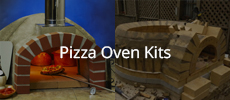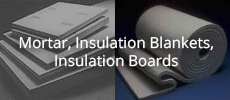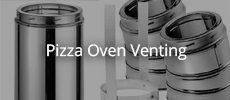X
-
It looks way better than mine did! You are spot on about the accuracy thing, at least from my experience. That is why I didn't use the spread sheet. My ability to set my jig to a few degrees was not good, and even when I set it right I still had gaps. I ended up just using my sliding bevel to eyeball the angle I wanted and transfer to the saw, then did a practice cut to see if there was any Vee left when the bricks butted together. I made any slight adjustments as needed and cut the rest of the course.
-
Today's update is a bit of a sidebar as I spent the last day of holiday making a jig instead of cutting bricks as hoped. I hope the pros are patient as my poor carpentry skill and thought might make this update kind of obvious unless you're an amateur like me, in which case hopeful it's insightful and inspiring!
my jig is inspired by @Chipster as shared by NCMan earlier in the thread. I do not have welding tools so worked with wood and prefabricated parts from the hardware store. I got some scrap 3/4 plywood that is used from furniture construction from my brother, who is a carpenter by trade, and also received a gift of some polyurethane finish, which I am applying to improve water resistance for use in the wet saw. I used a piece of angle Iron with 3/8" holes predrilled for the fence, and cut a arched slot with a jigsaw to allow the fence angle to be adjustable. Likewise I put in a long lag bolt with wing nuts and washers that can be adjusted to manage slope.
Because my carpentry skills are total crap, this jig is not square, and not through lack for trying! Fortunately I did get it level. That brings me to my tip for beginners like me - I don't think perfection is required in the construction of this jig. Some people probably can create perfect tools no problem. But there is that risk that things warp or twist during use, or look perfect but are off by a degree. So the advice I have, which comes from my brother, is to measure and adjust the jig settings relative to the saw blade after you clamp the jig to your table. That way, even if you have imperfect tools like me, you can still produce the right finish product! This, of course, needs to be measured on both the vertical and horizontal axis.
Here are some photos prior to application of finish. You may wonder why there is no nut on the pivot bolt and that's because it's a lock nut and I did not want to secure that nut until after the I'm done with the finish. You can also see what I mean about the boards not being square. Sloppy...but whatever. I will just have to be careful to align to the sawblade.
Last edited by Macrinehart; 03-28-2022, 11:05 AM.
Leave a comment:
-
Hello again from Portland! It's spring break week here, and while my wife and daughter are taking a school trip to Paris, my son and I have spent the week helping grandpa with chores that his mind says he can do but his body no longer agrees to. Despite the work I still got a weekend and my Cal-Sil insulation came in on Wednesday so I was able to resume the pizza oven project!
I got a start yesterday with patching imperfections in the hearth, which is more functional than artistic. With the patches set up today, I marked the center of my hearth with chalk lines and set about laying out the Cal-Sil and cutting down to size. My insulation is 55" in diameter, which should cover the full width of the oven plus 2" excess around the perimeter.
For the landing, the Cal-Sil width is sufficient to support the bricks for the IR without excess material. I undercut one side so had to add some extra pieces. Also I expect that once I'm clear regarding the depth of the opening I may cut some excess off the front later with an angle grinder.
Once the Cal-Sil insulation was cut to size (using respirator and face shield - lots of dust - I arranged the blocks directly on the hearth in the desired arrangement and traced the perimeter on the hearth with chalk. I removed the Cal-Sil and used my chal line to layout the mosaic tiles for drainage. Finally I replaced the Cal-Sil, this time on the tiles. And that's a wrap for today!
I'm excited to get started on the oven floor, but I need more firebrick clay to start, so I'l be cutting more blocks next, which also means working on a jig for the bricks. Still one more day of break...we'll see how far I get.
Last edited by Macrinehart; 03-26-2022, 07:43 PM.
- Likes 1
Leave a comment:
-
If you have pooling water, it's best to alleviate that now, as it will continue to pool in the future, should it make it's way under the oven. But, it won't cause any issues other than that. It's really a good idea to get that area as flat as you can, not for looks, but to allow good drainage now and later. Plus, it helps maintain a good, flat floor area, which is key.
When cutting the bricks, there is a method to save lots of cuts, rather than cutting them in half, then cutting again. I think it was the Chipster who provided a thread on that(?)
Leave a comment:
-
NCMan, your guidance on copper is well noted; in my case I was using excess material from an old project, but definitely would go with PVC if I had to buy new.
Today I got out the wet saw and got started with cutting bricks for the dome. I cut 34 bricks in half, and then started with the "angle side" cuts (see pompeii_dome_calculator_v4). I started with an assumption of 4.5" wide bricks, which requires a 5.2 degree angle on the first course. What I found is that after putting on a couple of angle side cuts, the outer width of my brick is about 4.25", and after updating the math I realize I'm supposed to put a 4.9 degree angle. I do have some fairly precise tools for measuring angles, but we're talking precision in degrees, not 1/10s of a degree. So I'm kind of eyeballing the fractions. Is it going to matter if I'm +/- 1/10th of a degree?
I still feel like I'm dialing things in with cutting the bricks; couple of questions on this front.- Is it safer to cut the angle cuts too steep, or shallow? I'm thinking that if I'm a tad bit too steep on the angle, that just means I need a little extra mortar between the bricks, particularly toward the outer diameter, while too shallow will result in less mortar, or maybe pinching. I'm assuming if I cut a 5-degree angle instead of 4.9, I'm ok.
- As I'm building each course, am I correct that the bricks should be touching each other (i.e. no mortar) on the inside edge? I've seen cases with mortar joints and cases without, not sure if one is better than the other.
- Regarding the tilt cut, as I get to upper ranks - is that tilt on the plane of the angle cut? I'm thinking that is the case - with the inside face and outside face in rhombus shape, right?
Last edited by Macrinehart; 03-20-2022, 08:37 PM.
Leave a comment:
-
It's perfectly fine to use copper w/those, but for future reference to other prospective builders, PVC or some other cheap material works just fine. In normal applications, it's not advisable to have copper in contact w/concrete, but w/what you are doing, it matters not. You may get some erosion of the copper, that's all. Nice progress!!Originally posted by Macrinehart View Post
I used copper pipe to set 8 holes in the concrete, they are covered by about a half inch. I'll drill a pilot hole up from the bottom and down from the top to finish.
Leave a comment:
-
All great advice, David.Originally posted by david s View PostIt depends a bit on what type of insulating material you place on top of the concrete. Calcium silicate board has a bit of give in it (you can dent it easily with your fingernails) and vermicrete cast over the concrete slab won’t care how rough the concrete is. It would be advisable to drill some drain holes through the concrete to assist removal of moisture from under the cooking floor. Use a small diameter drill first (1/4“) in case you hit some rebar, then enlarge them to 1/2”.
Regarding the flue, you need an 8” diam glue pipe for a 41” internal diam oven. With a front flue design the oven is a cross draft system and requires more pull from the flue than an updraft system as in a conventional fireplace. This results in smoke pouring out the front, particularly at start up if the draw isn’t strong enough. In addition some decent funnelling to the base of the flue pipe helps gather the smoke smoothly before rising and exiting out the flue pipe. A square or rectangular flue section is not quite as efficient as a round one so some additional cross sectional area is required if departing from a round pipe. Don’t attempt to save money by going galvanised rather than stainless because you’ll have to replace it down the track which will end up costing you more in the long run.
Leave a comment:
-
I used copper pipe to set 8 holes in the concrete, they are covered by about a half inch. I'll drill a pilot hole up from the bottom and down from the top to finish.It would be advisable to drill some drain holes through the concrete to assist removal of moisture from under the cooking floor.
Leave a comment:
-
It depends a bit on what type of insulating material you place on top of the concrete. Calcium silicate board has a bit of give in it (you can dent it easily with your fingernails) and vermicrete cast over the concrete slab won’t care how rough the concrete is. It would be advisable to drill some drain holes through the concrete to assist removal of moisture from under the cooking floor. Use a small diameter drill first (1/4“) in case you hit some rebar, then enlarge them to 1/2”.
Regarding the flue, you need an 8” diam glue pipe for a 41” internal diam oven. With a front flue design the oven is a cross draft system and requires more pull from the flue than an updraft system as in a conventional fireplace. This results in smoke pouring out the front, particularly at start up if the draw isn’t strong enough. In addition some decent funnelling to the base of the flue pipe helps gather the smoke smoothly before rising and exiting out the flue pipe. A square or rectangular flue section is not quite as efficient as a round one so some additional cross sectional area is required if departing from a round pipe. Don’t attempt to save money by going galvanised rather than stainless because you’ll have to replace it down the track which will end up costing you more in the long run.Last edited by david s; 03-18-2022, 06:44 PM.
- Likes 1
Leave a comment:
-
Today I decided to take the form off. It's been 12 days since I poured the hearth.
I think it looks pretty good. The top is a little rough aftwr removing the loose material and I think it could use some patch work.
Sides are better except around the attempted bulldoze, which was done too late in the curing process. I encountered two issues on the bull note- first the concrete was too hard when I started. I should have just let it be. Second, I had covered the forms with painters tape, and when I used the bulldoze trowel it torn up the tape on the edge of the forms and embedded it into the concrete. If I had a do over I would not use the tape on the top 3/4 inch of the walls.
One you get below the mess with the bull nose things look pretty good! Minor air bubbles, no major holes, and the cove trim around the bottom edge is virtually perfect all the way around!
I suppose I can patch this up with some mortar. The top still feels a little gritty so I'll let that dry and brush it off. Maybe some leveler, or just mortar?
cheers!
Leave a comment:
-
The question of depth of oven opening, flue gallery and flue size has had me thinking about the details on this part of the oven. I've read some anecdotes of differential configurations, but not why's. So today I decided to do a little research.
First call was to our local sheet metal fabricator. They don't have directly applicable experience but their opinion was that for forced air systems, which is their specialty, the crossectional area for transitions needs to be consistent. So for an 8" pipe, that 50.27" of area, which suggests an flue gallery opening with the same area. Some options: 4" x 12.6", 5" x 10", or 6" x 8.4". In theory, a reduction in crossection area could result in a negative pressure, pushing smoke back down the chimney and out the front of the oven.
A second design consideration comes from firebox design and cod specifications, where the following ratios are recommended from fire box to flue opening:
Square: 10 x 1
Round: 12 x 1
Rectangle (with aspect ratio > 2:1) : 8:1
So based on a 41" diameter oven, a rectangle flue gallery with 2:1 or better aspect ratio needs 173 sq opening. That looks like a 9" x 19.25" opening to the flue gallery! But of course that needs to shrink to an 8" pipe, which could lead to a negative pressure. Seems like a lot more than I've seen discussed so far.
I'm also thinking that because the actual fire is not going to be using the entire oven floor, maybe the firebox specifications are overkill?
Welcome any comment on this from the pros. Thanks!
Leave a comment:
-
-
Hi david s - I drew this crosssection view, is this what you mean by setting the flue gallery inside the oven perimeter?
Leave a comment:
-
To make the flue gallery shallower it can be set inside the oven perimeter. As the dome rises it gives you more space for the gallery vent opening. Building in brick units reduces the ability to make the gallery thinner and thereby shallower.
Leave a comment:





Leave a comment: